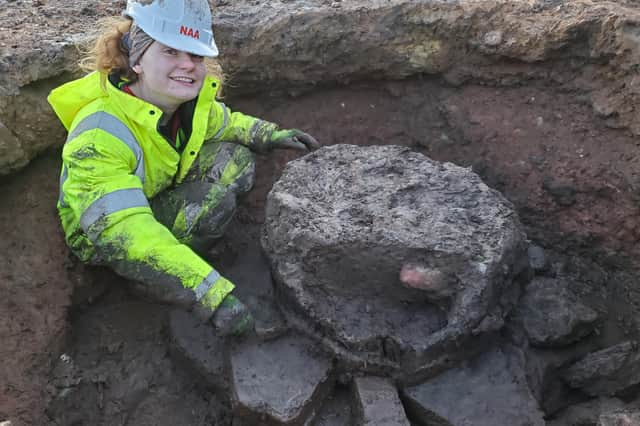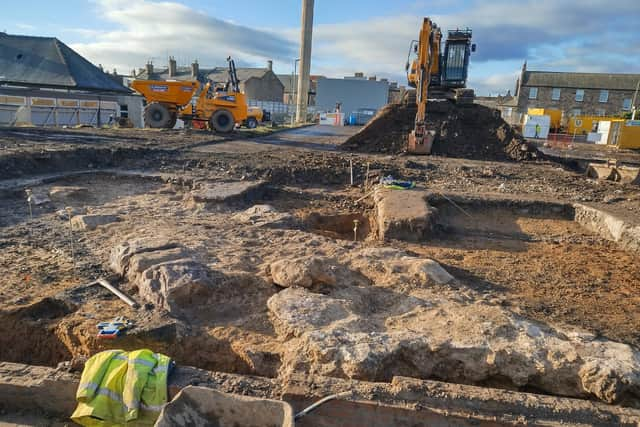Eye-catching discoveries at Berwick hospital site dig


The excavation, which is taking place as part of the £30million project by Northumbria Healthcare NHS Foundation Trust to build a state-of-the-art new hospital, has revealed a number of discoveries related to Berwick’s medieval history.
At the same time, demolition work is being carried out and construction is set to begin in the spring. Originally built in 1874, the current infirmary is no longer suitable for the efficient delivery of modern-day healthcare.
Advertisement
Hide AdAdvertisement
Hide AdIn recent weeks, workers from Northern Archaeological Associates have found an ancient toilet, a well that contained the nearly complete remains of a pony or donkey and new evidence relating to the town’s medieval fortifications.


The latter discovery is the foundations of a four-metre-wide defensive wall alongside a 12-metre-wide by two-metre-deep ditch.
Berwick’s history of changing hands between England and Scotland is well known and the Elizabethan walls that remain a key feature in the town to this day are clearly understood based on their physical remains and historical records.
However, the newly discovered wall and ditch have been described as ‘completely unexpected’.
Advertisement
Hide AdAdvertisement
Hide AdSite supervisor Craig Parkinson said: “They seem similar in construction to the earlier town defences, but face the wrong direction to be obviously associated with them.
“The alignment makes more sense as part of an outer wall of the castle, but they are much further away than would be expected if that were the case.
“Are they part of either of these, do they relate somehow to the later fortifications or do they represent a phase of Berwick’s development that we were previously unaware of?”
It is hoped that further excavation work will reveal more and better-preserved sections of the wall, which will help answer some of the questions raised so far.
Advertisement
Hide AdAdvertisement
Hide AdAs for the toilet find, the barrel latrine was made of wooden planks bound together with twisted hazel and – according to site supervisor Holly Drinkwater – was likely originally used to store foodstuffs before being repurposed as a latrine.
The barrel was carefully excavated, packed and wrapped in cling film before being sent to the York Archaeological Trust, where it is hoped the wood can be preserved and the barrel restored to its former glory.
Holly added: “The contents will be subject to environmental analysis to assess the presence of seeds, grains and intestinal parasites.
“These environmental remains are a goldmine for archaeologists for reconstructing past diets and will be able to tell us a great deal about the eating habits and hygiene of the residents of medieval Berwick.”
The new hospital will re-provide all existing services – with the addition of an accredited endoscopy suite, as well as housing GP practice Well Close Medical Group.